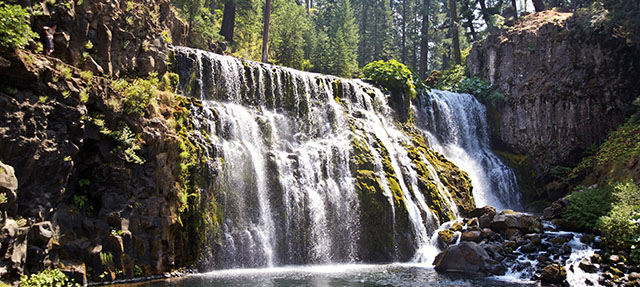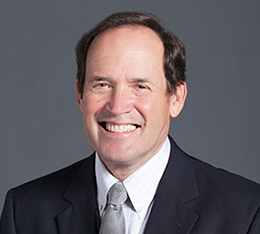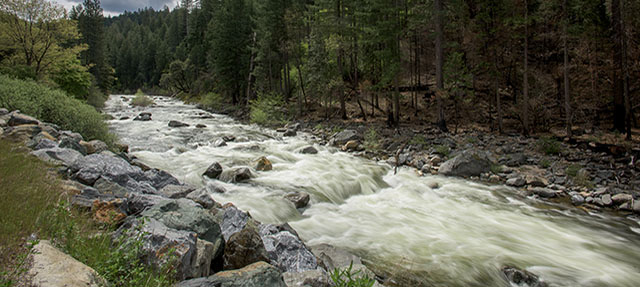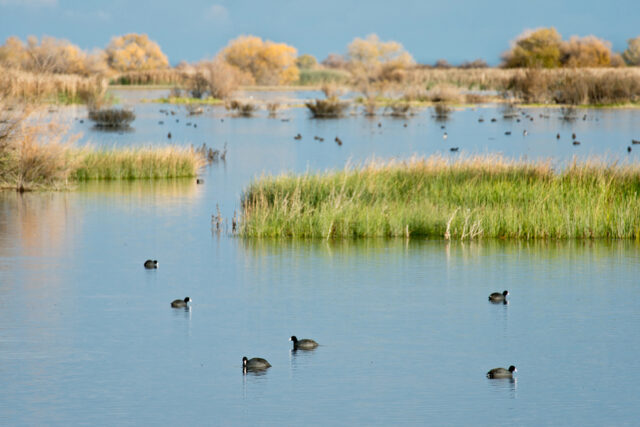This is part of a series on issues facing California’s rivers.
California’s Wild and Scenic rivers have been in the news of late. The US Bureau of Reclamation and its cost-sharing partner, Westlands Water District, proposed to raise Shasta Dam to increase storage capacity in the state’s largest reservoir. They believe that the project would increase water supply reliability and enhance cold water storage to support salmon downstream.
Opponents of the project—including the State of California, environmental organizations, fishing groups, and Native American tribes—argue that the project would flood prime fish habitat and inundate tribal religious sites on the McCloud River, which is protected under the California Wild and Scenic Rivers Act. Given current federal and state laws, it is unlikely that the bureau will be able to raise Shasta dam anytime soon.
Congress enacted the National Wild and Scenic Rivers Act in 1968 to preserve the free-flowing condition of rivers that have outstanding scenic, recreational, geologic, fish and wildlife, historic, and cultural values. It bars federal agencies from actions that would harm these values.
California passed its own Wild and Scenic Rivers Act in 1972. The statute prohibits activities that could damage soil, water, timber, and habitat close to the river. It also bars the State Water Board and other state agencies from assisting or licensing facilities that could harm the wild and scenic values of a protected river.
The state and federal wild and scenic river systems include 26 of California’s rivers. These protected river segments and tributaries encompass about 2,000 river miles, or less than one percent of California’s rivers and streams.
A persistent myth is that wild and scenic rivers are, in effect, wilderness areas and thus protected from any uses except recreation. In fact, although both statutes protect the “free-flowing” condition of segments designated wild and scenic, most of California’s protected rivers are affected by other water and land uses—including dams and water diversions.
Yet, the Wild and Scenic Rivers Acts have had profound influences on some of California’s rivers by restricting new water projects and land uses that may impair the values for which a river was included in the system.
In 2019, the California courts ordered Westlands not to study or participate in other efforts to raise Shasta Dam, because the California Wild and Scenic Rivers Act prohibits “agencies of the state” from cooperating on facilities that could impact the free-flowing condition of the McCloud.
Although the decision did not apply directly to the Bureau of Reclamation, for several reasons it, too, will have difficulty proceeding with the Shasta expansion project. For example:
- Raising the dam would require a “dredge and fill” permit from the US Army Corps of Engineers. Before the bureau can receive such a permit, federal law requires that it obtain certification from the State Water Board to ensure that the project would comply with state water quality standards and other legal requirements. California law would preclude the board from doing this, however, because the project would inundate a state-designated wild and scenic river.
- Federal law also requires the bureau to secure at least 50 percent of the funding for new federal facilities from non-federal partners. Currently it has no alternative to Westlands. Moreover, most other potential cost-sharing partners—irrigation districts and other water supply agencies—are also “agencies of the state” and would be bound by the restrictions of the state Wild and Scenic Rivers Act, as was Westlands.
- Finally, the Central Valley Project Improvement Act requires the bureau to comply with all requirements of state law. This includes the wild and scenic protections for the McCloud River.
Future efforts to expand Shasta Dam by the Bureau of Reclamation or any “agencies of the state” will therefore run afoul of multiple state and federal laws. Of course, the California Legislature and Congress could change these laws or grant a special exemption for the Shasta expansion project. But neither is likely in this time of divided government in Washington, DC, and divergent notions of federalism and environmental protection between the Newsom and Trump administrations. Thus, as the laws now stand, an expanded Shasta Reservoir—at least one that encroaches on the free-flowing stretch of the McCloud River—remains a remote prospect.





